ART NOUVEAU "OUT OF THE BEATEN TRACKS"
ARGENTINA
- BUENOS AIRES
- ROSARIO
AUSTRIA
- VIENNA
BELGIUM
- BRUXELLES
- ANTWERPEN
CZECH REPUBLIC
- PRAHA
- NORTHERN BOHEMIA
FINLAND
- HELSINKI
FRANCE
- PARIS
- NANCY
- STRASBOURG
GERMANY
- DARMSTADT
- WEIMAR
HUNGARY
- BUDAPEST
ITALY
- TORINO
- MILANO
LATVIA
- RIGA
NORWAY
RUSSIA
SLOVAKIA
- BRATISLAVA
SPAIN
- BARCELONA
- LAS PALMAS
THE NETHERLANDS
- DEN HAAG
U.K.
- GLASGOW
U.S.
OTHER MENUS
ART NOUVEAU HOME
WHAT'S NEW?
ART NOUVEAU ARTISTS
© 1993-2012 Frank Derville
Visit Gaudi's work in Barcelona
In the modernist movement in Barcelona and even in Barcelona's history of architecture, no other architect have a brighter place than Antonio Gaudi. In fact, Gaudi is the only architect in the universe to have as much as 3 buildings listed at the world heritage cultural property of UNESCO. It is impossible to leave Barcelona without a glance at one of Gaudi's buildings. And once you've seen one, it is hard to resist visiting all his masterpieces. So let's go...
La Casa Vicens (1883-85)
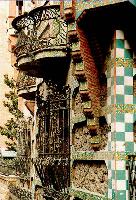 |
The casa Vicens is the first house built by Gaudi in Barcelona. At that time, it was surrounded by a large garden and an iron railing. Nowdays the garden has been reduced, the railing too. Part of it has been set to the entrance of the Park Guell. The house was inspired by mudejar arabic style. It is made of brick and some areas are covered by ceramics tiles. |
La Sagrada Familia (1883-1926)
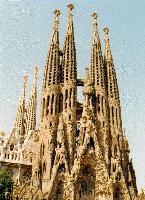 |
Gaudi died before he could finish this cathedral. It is still under construction nowdays and money is often missing to continue. There is a big controversal around this construction: "How Gaudi would have finish to built it?". Gaudi left some plans but Gaudi never followed his plans till the end. At the moment, only the two façades of the transept (with eight towers) and the façade of the chor are finished. No roof, no nave (5 were planed). One is dedicated to Christ birth (see image on the left) the second to Christ death. The first one is sculpted in a very fluid way, commestible way would have say Dali. The second is expressionnist. Both follow the whole (hi)story with several scenes. Into the crypt, there is a museum about Gaudi and the construction of the Sagrada Familia (models, plans, sketches...). |
La finca Güell (1884-87)
Palau Güell (1886-89)
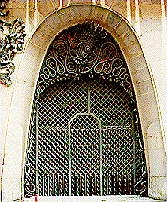 |
One of the must by Gaudi. Gaudi gives us the result of his thoughts about what should be a house for a "Lord". The plan of this building is revolutionary. It is centred on a 3 story high reception room that has a natural stary ceiling. Top cool. The wood work reminds me Arts & Crafts (see especially the V&A; museum). The façade has 2 large metal doors to let the carriage and pair enter. This contribute also to magnify the size of the building. In this building Gaudi used for the first time the 5th façade (the flat roof) and played with the design of a dozen of chimneys. The building is open for visits. |

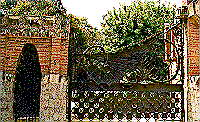
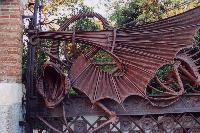
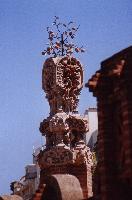
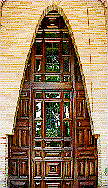
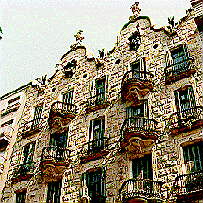
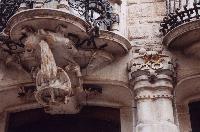
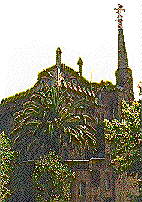
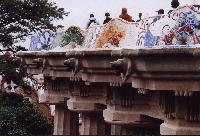
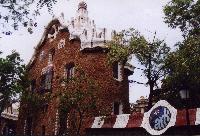
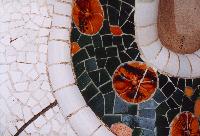
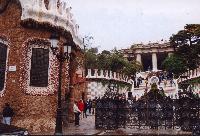
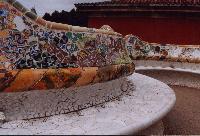
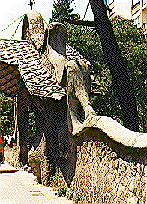
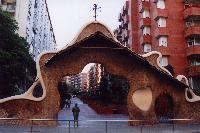
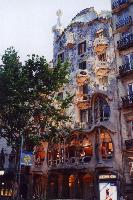 General view by night
General view by night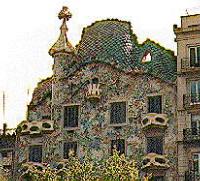
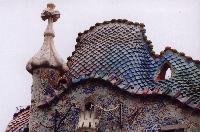
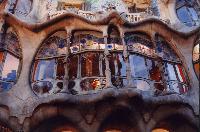
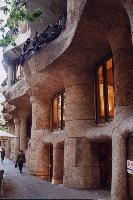
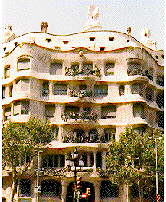
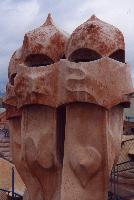
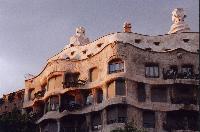
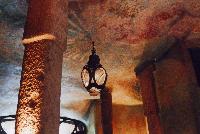

 ,
Santa Coloma de Cervello
,
Santa Coloma de Cervello